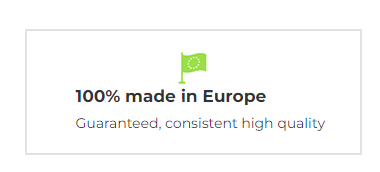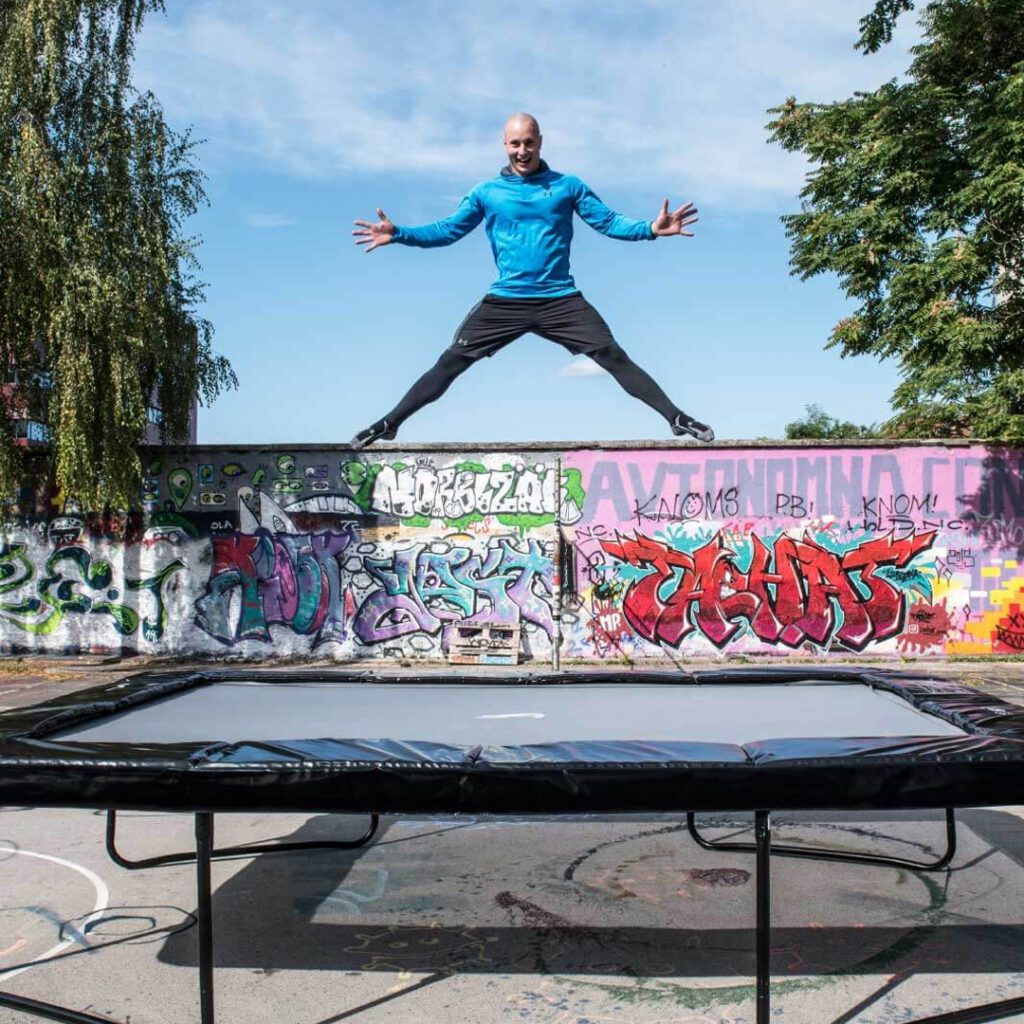
You’ve been working on your gymnastics skills for a while now and feel like you’ve hit a plateau. Your routines feel stagnant and you’re not progressing as quickly as you’d like. It’s time to shake things up and push yourself out of your comfort zone. A sport trampoline could be just the tool to boost your skills and take your gymnastics to the next level.
With practice and persistence, the skills you gain on the trampoline will translate to upgraded routines and new confidence in your abilities. Trampolines are a fantastic tool for gymnasts looking to improve their skills and push their limits. Incorporating trampoline training into your regular practice regimen has significant benefits.
In this blog we will be looking into ways and nuisances to improve your gymnastics game with a sport trampoline
Understanding the Basics of Gymnastics on a Sport Trampoline

To get the most out of using a sport trampoline for gymnastics, it’s important to understand some basics. Focusing on proper form and safety will help you learn new skills and avoid injury.
Proper Form and Technique
The key to mastering gymnastics on a trampoline is practicing proper form for each skill. Some tips to keep in mind:
- Stay tight and controlled – Move in a slow, controlled manner. Never lock your joints.
- Keep your body straight – Extend through your toes, knees, and torso for maximum height and control.
- Use your arms – Your arms help generate momentum and control your movement. Swing them above your head and out to the sides.
- Spot your landing – Look for the spot where you want to land before leaving the trampoline bed. This helps control your momentum and stick the landing.
- Practice the basics – Focus on fundamental skills like the seat drop, knee drop, front drop, and pike before moving on to more advanced skills. Master the basics before progressing.
Safety Precautions
Because sport trampolines provide a lot of bounce, certain safety steps are important:
- Only one person at a time – Never have more than one person jumping on the trampoline at once. A large 14ft trampoline can be used to added precaution.
- Use safety padding – Ensure there is proper padding over the springs, along the edges, and on the ground around the trampoline. This prevents injury if you land incorrectly.
- Learn how to properly land – Land with your knees bent and roll onto your back or seat to absorb impact. Never land directly on your feet.
- Consider a spotter – Have a trained spotter present when first learning new skills. They can help guide your form and spot you in case you lose control or land incorrectly.
- Wear proper attire – Wear comfortable athletic clothing, gripping socks, and avoid any loose jewelry. This allows for free movement and helps prevent injury.
Following these tips will ensure you get off to a safe start and learn proper technique for gymnastics on a trampoline. With regular practice of fundamentals, you’ll be mastering new skills in no time!
Choosing the Right Sport Trampoline
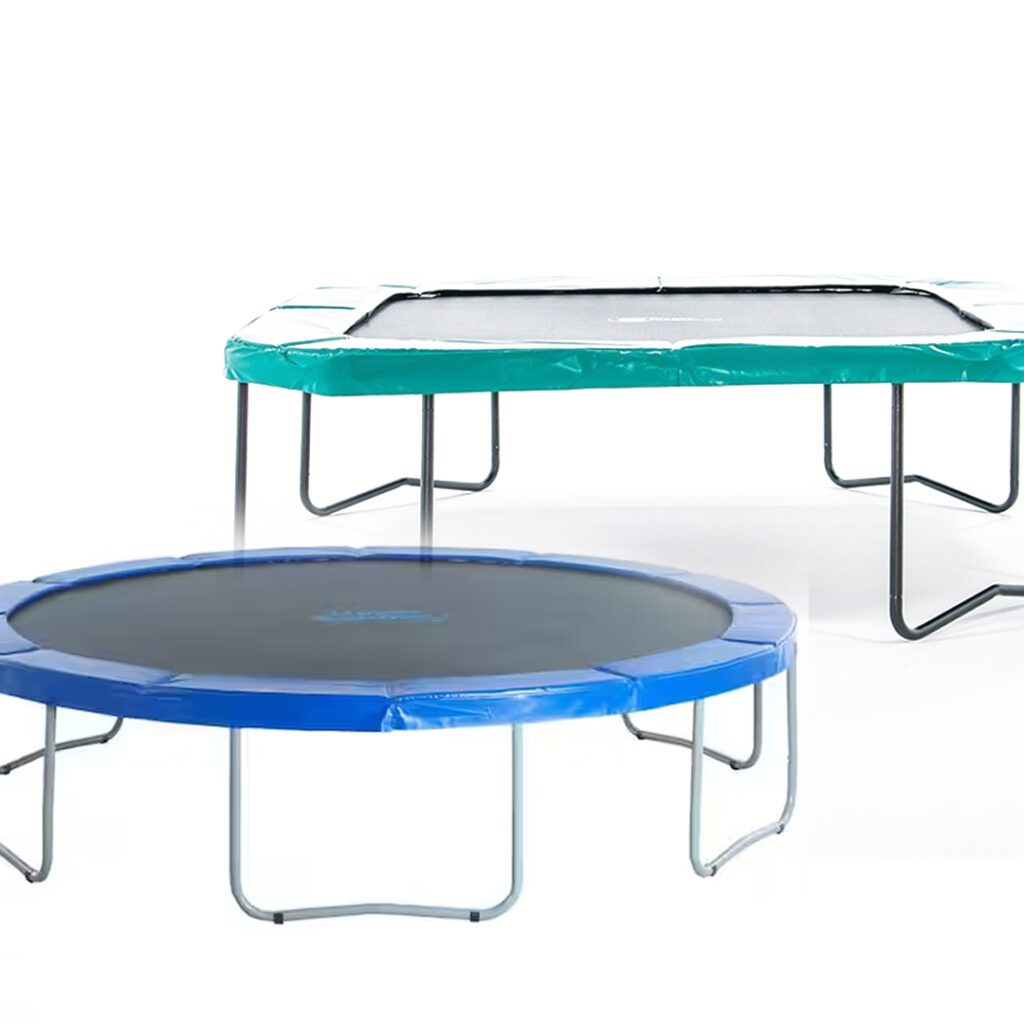
When choosing a sport trampoline, you should know what to ask in a trampoline. There are a few key features to consider to ensure it will meet your needs for gymnastics training.
Size
For gymnastics, a larger trampoline will give you more space to practice skills and routines. Look for a trampoline that is at least 12 feet in diameter, up to 16 feet. The larger size will allow more height for flips and twists without worrying about landing near the edge.
Safety Pads
Thick safety pads that fully cover the springs and frame are a must for any sport trampoline. Look for pads that are at least 1.5 inches thick, preferably 2 inches. The thicker the pads, the more protection for you if you land on or near them. Pads should also have secure straps to keep everything in place during use.
Bounce
A trampoline designed for gymnastics will have a high, responsive bounce to give you maximum lift for skills. Look for a minimum of 105 high-tension steel springs, preferably more. The more springs, the better the bounce. Higher gauge (thicker) steel springs, around 5.5 to 6 millimetres, also produce a better bounce.
Why a Warm-Up Session is Important?
Warming up before gymnastics practice on a sport trampoline is essential to prepare your body and minimize injury risk. A good warm-up routine should include both cardio exercises to raise your heart rate and dynamic stretches to loosen your joints and muscles before you start learning jumping tricks.
An effective warm-up routine before gymnastics or trampolining has many benefits:
- It increases your heart rate and breathing, supplying oxygen to your muscles. This allows you to train harder and safer.
- It raises your body’s core temperature, making your muscles more pliable and less prone to strains or tears.
- It helps prevent injuries by gradually preparing your body for the demands of the sport. Always start slowly and build up intensity over 10-15 minutes.
Be sure to start any session with a structured, progressive warm-up routine focusing on cardio, dynamic stretches, and mobility exercises.
Advanced Training Techniques
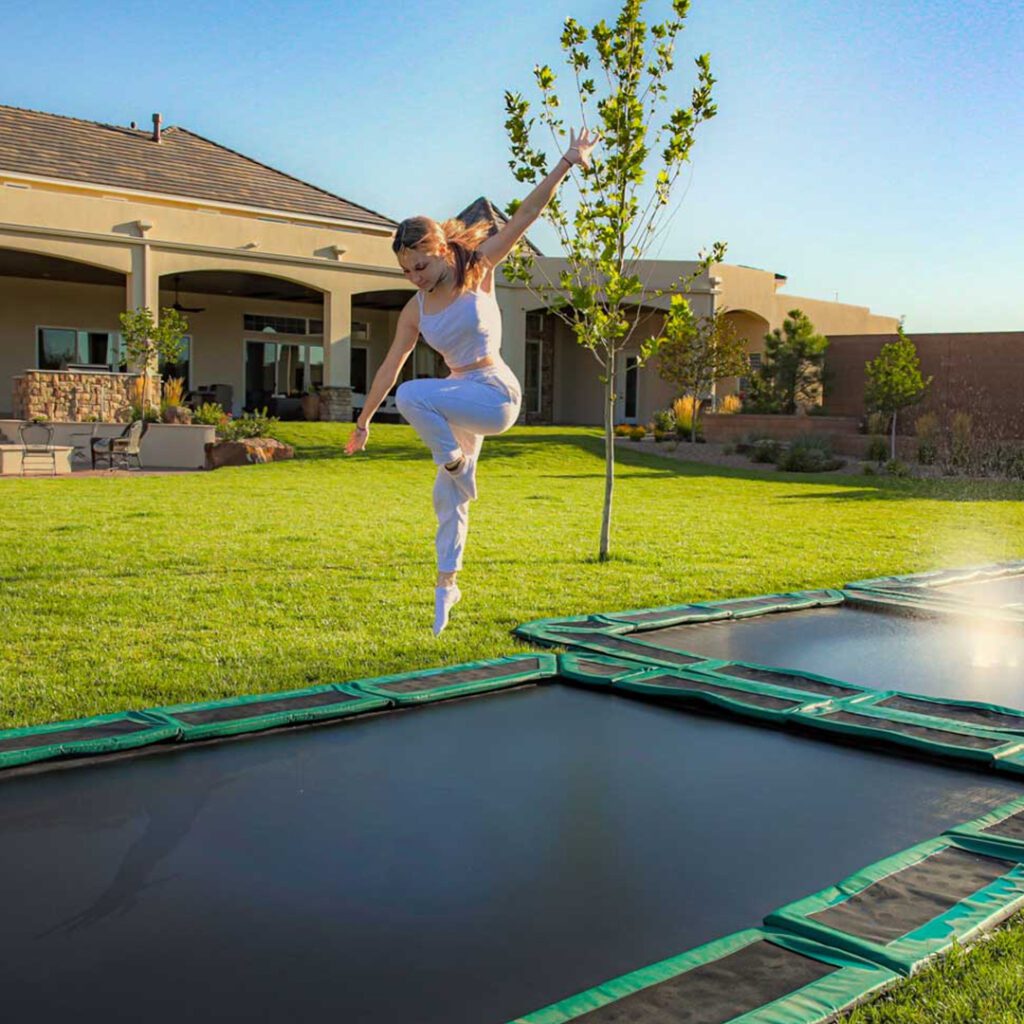
Once you’ve mastered the basics, it’s time to step up your trampoline gymnastics game with some advanced techniques. For your safety different trampoline accessories can be used as well. Start by incorporating simple flips and somersaults into your routine.
Front flip
The front flip, also known as a front tuck, is a basic maneuver to get you started with inversions. Run up to the trampoline, jump up with arms overhead, tuck your chin to your chest and pull your knees up to rotate forward, landing on your feet. Start with a spotter for support and practice the proper form. Build up your comfort and speed over time.
Back flip
Similar to the front flip but in reverse. Bounce high, throw your head and arms back while arching your back, spot the trampoline behind you, and pull your knees up and over to rotate backwards, landing on your feet. A back flip requires more height and power so make sure you’re comfortable with front flips first.
Progression tips
- Focus on one flip or twist at a time. Don’t move on until you’ve mastered it.
- Work on generating maximum height. The higher you go, the more time you’ll have to complete the maneuver.
- Practice the proper form and technique with a mat or foam pit before the trampoline. This allows you to get the feel of the flip without the bouncing effect.
- Once you’ve mastered single front and back flips, you can start combining them into sequences or adding twists for more advanced skills.
With regular practice of these advanced techniques, your trampoline gymnastics skills will be bouncing to new heights in no time. Stay focused, start slowly, and keep safety in mind as you progress to more complex maneuvers.
Sport Trampoline Maintenance
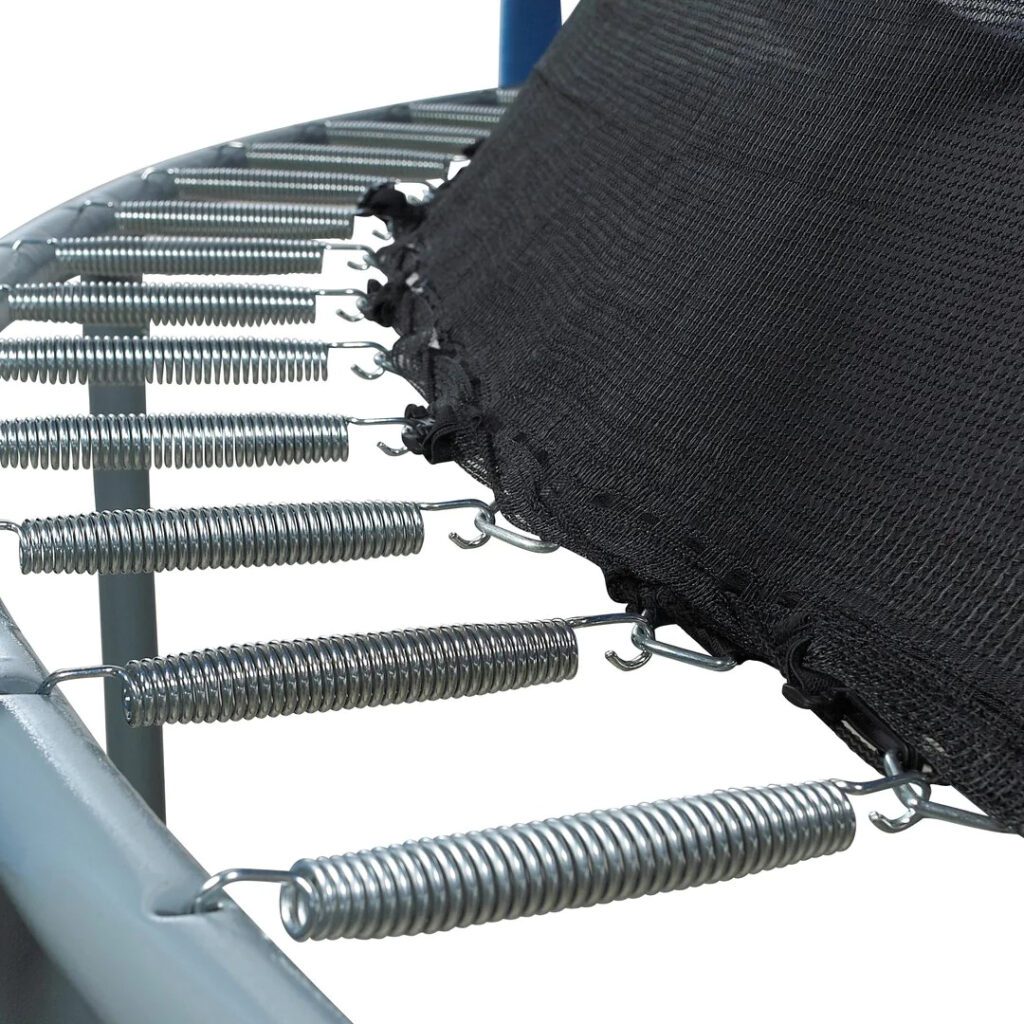
To keep your sport trampoline in top shape and ensure maximum safety, perform regular maintenance and inspections. Proper spare parts should be arranged beforehand.
Check that the trampoline bed is securely attached to the frame with no tears or holes. Replace any damaged parts immediately. Lubricate the springs with trampoline wax or oil and tighten any loose springs to prevent injuries from pinch points or snapping springs.
Inspect the safety padding around the trampoline for any damage, wear or tearing. Replace damaged padding to avoid falls from the trampoline onto the ground.
Tighten any loose nuts, bolts or screws on the trampoline to prevent structural damage or instability. Check that the trampoline is level for optimal bounce and safety. You can adjust adjustable legs to level the trampoline.
For optimal bounce, consider rotating or flipping your trampoline mat twice a year. This will prevent over-stretching in any one area of the mat. Follow the recommendations in your trampoline’s instruction manual.
Inspect the trampoline netting for any damage, tears or holes before each use. Replace damaged netting immediately to avoid falls from the trampoline.
- Check that all shock-absorbing pads and pole padding are securely attached with no damage before each use. Replace damaged padding to prevent injuries from falls onto the pads or poles.
- Ensure any trampoline ladders, stairs or ramps leading to the trampoline are securely installed and properly maintained to prevent slips or falls when accessing the trampoline.
- Perform a bounce test before each use to ensure even, consistent bounce across the entire trampoline bed. If there are any dead spots or inconsistent bounce, do not use the trampoline and inspect for any damage.
Following these guidelines will help keep your sport trampoline in optimal and safe condition for years of enjoyment. Performing regular inspections and maintenance is key to avoiding injuries and maximizing performance.
Conclusion
So there you have it, with some dedicated practice time on a sport trampoline you can take your gymnastics skills to new heights, quite literally. Don’t be afraid to start small and build up your confidence over time. Even just 10 or 15 minutes a few times a week can make a big difference. Before you know it, you’ll be pulling off moves you never thought possible and wondering how you ever managed without a trampoline to hone your craft. With passion, persistence and a spring in your step, the sky’s the limit.


